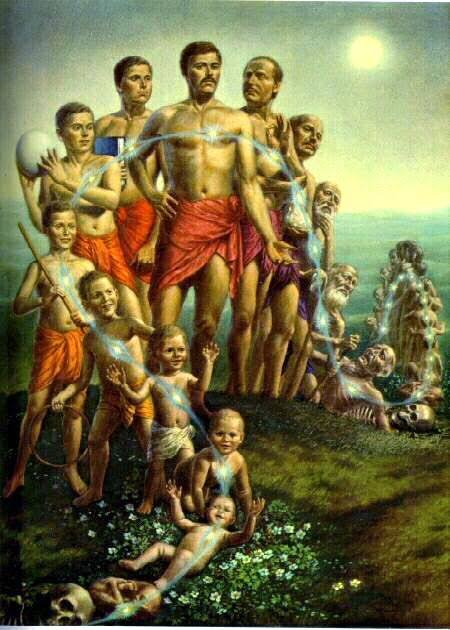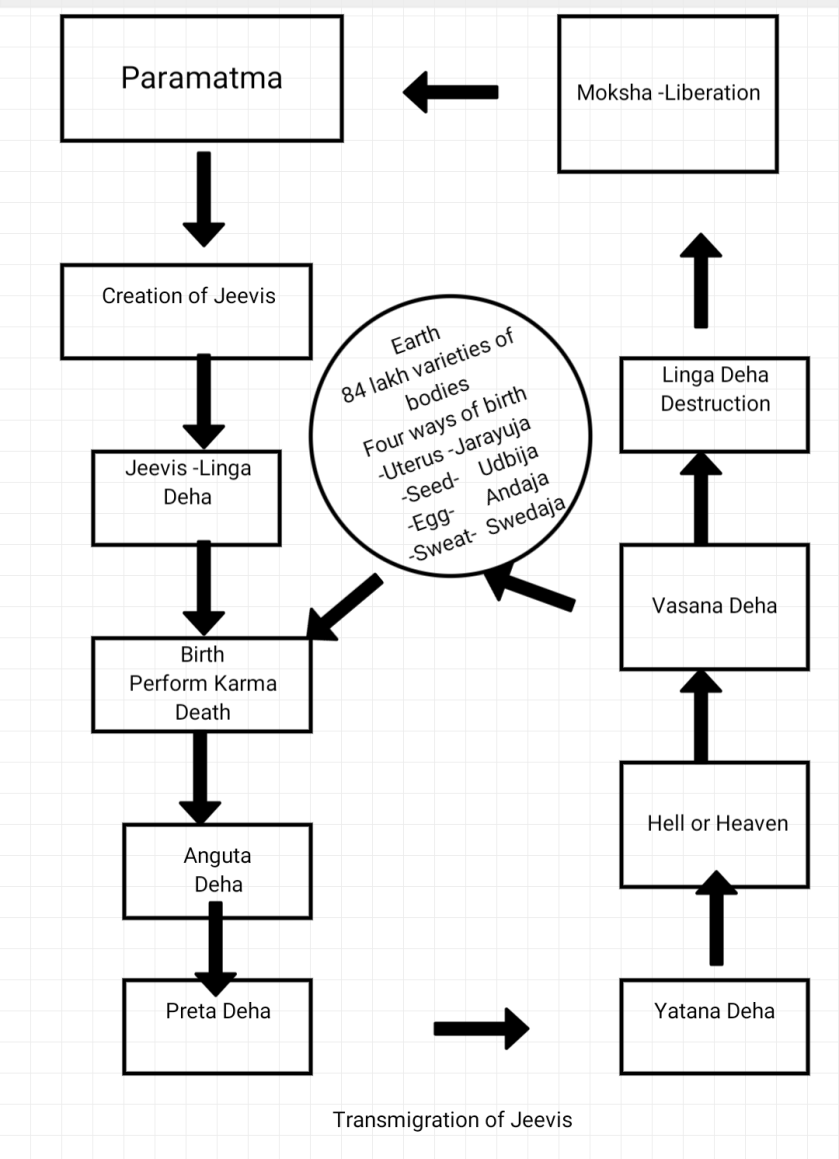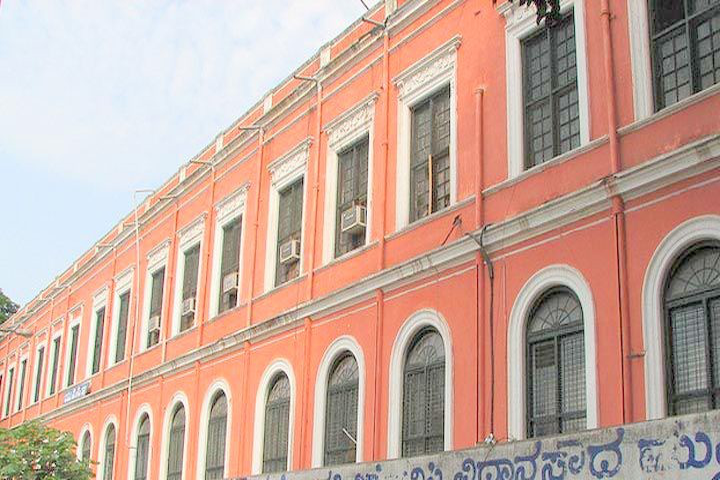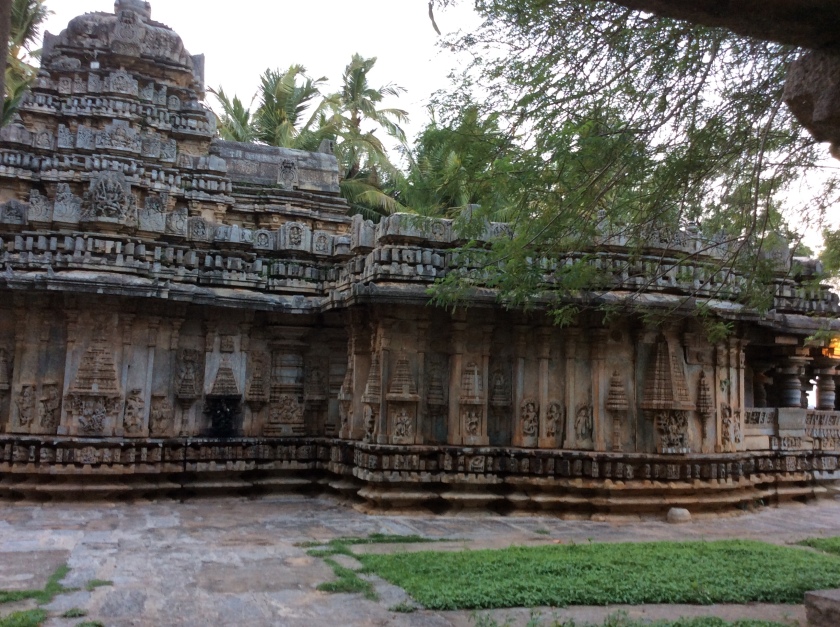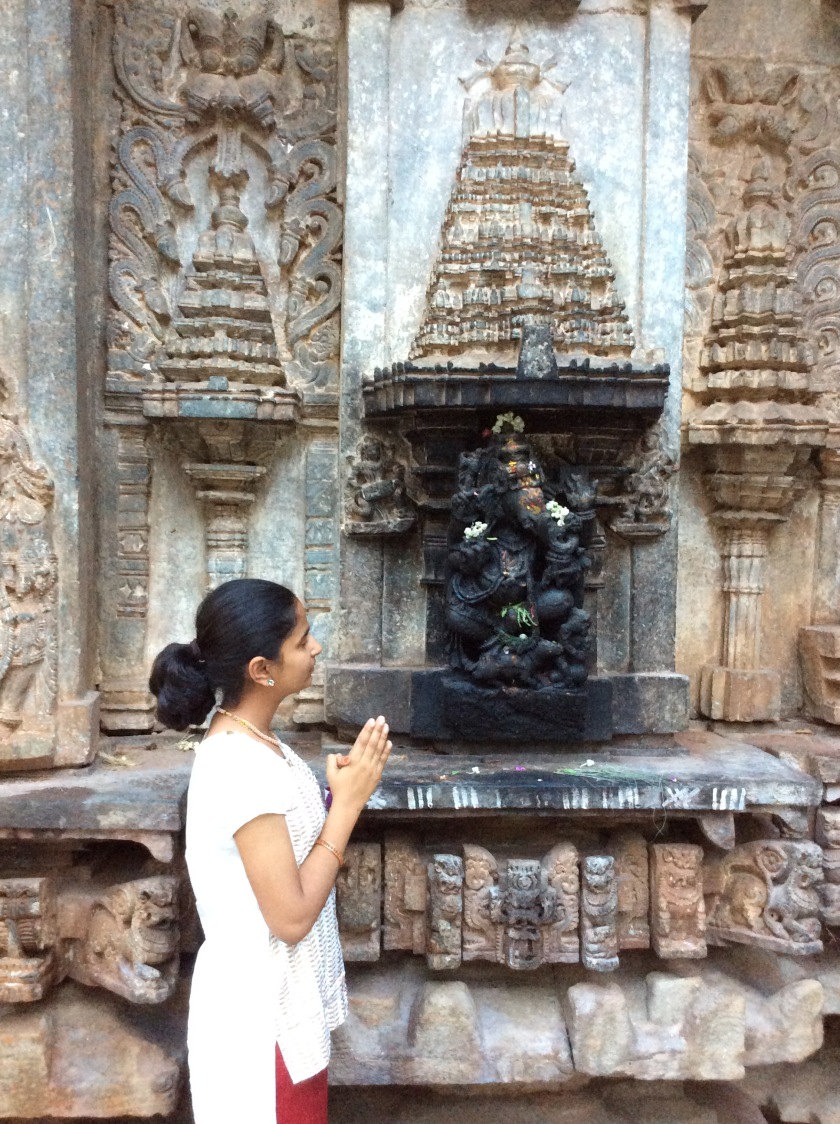
ಪಶ್ಚಿಮ ಬಂಗಾಳದ ಮಾಲ್ದ ಜಿಲ್ಲೆಯ ಒಂದು ಚಿಕ್ಕ ಪಟ್ಟಣದಲ್ಲಿರುವ ಈ ಸಲಾಫಿ ಮೌಲಾನಾ ಮೂರು ಬೆರಳುಗಳಿಂದ ತಿನ್ನುತ್ತಾನೆ, ಫೋಟೋಗ್ರಫಿ, ಸಂಗೀತ, ಟಿವಿ ಮತ್ತೂ ಕಾಫಿರರೊಡಗಿನ ಎಲ್ಲ ಬಗೆಯ ಸಂಬಂಧಗಳನ್ನು ನಿಷೇಧಿಸಿದ್ದಾನೆ. ಈತ, ಬೃಹದಾಗಿ ಹರಡುತ್ತಿರುವ ರೋಗದ ಗುಣಲಕ್ಷಣ ಮಾತ್ರವಾಗಿದ್ದಾನೆ.
೪೪ ವರ್ಷದ ಮಾಲ್ವೀ ನಸರ್ ಶೇಖ್ ನೋಡಲು ಎಲ್ಲರಂತಲ್ಲ, ಅಂತೆಯೇ ಅವನ ಮಾತು ಮತ್ತು ನಡವಳಿಕೆ ಕೂಡ. ಈ ಮನುಷ್ಯ ಕೇವಲ ೫ ಅಡಿ ೨ ಇಂಚು ಎತ್ತರವಿದ್ದರೂ, ಕೆಬಾಲ ಪಟ್ಟಣದಲ್ಲಿ ಅತ್ಯಂತ ಪ್ರಭಾವಿವ್ಯಕ್ತಿಯಾಗಿದ್ದಾನೆ. ಕೆಬಾಲ ಪಟ್ಟಣವು ಪಶ್ಚಿಮ ಬಂಗಾಳದ, ಬಾಂಗ್ಲಾದೇಶದ ಗಡಿ ಭಾಗದಲ್ಲಿರುವ, ಮಾಲ್ದಾ ಜಿಲ್ಲೆಯೆಲ್ಲಿದೆ. ನಸರ್ ಕೆಬಾಲದ ಮಸೀದಿಯ ಮೌಲ್ವಿಯಾಗಿದ್ದು, ಒಂದು ಮದ್ರಾಸಾವನ್ನೂ ಕೂಡ ನಡೆಸುತ್ತಿದ್ದಾನೆ. ಈತ ವಿಚಿತ್ರವೆನಿಸುವ ಬಂಗಾಳಿ ಮತ್ತು ಬಿಹಾರಿ ಮಿಶ್ರಿತ ಭಾಷೆಯೆನ್ನು ಮಾತನಾಡುತ್ತಾನೆ, ಹಾಗೂ ಅರಬ್ಬೀ ಭಾಷೆಯಲ್ಲಿ ಸುಲಲಿತವಾಗಿ ವ್ಯವಹರಿಸಬಲ್ಲನು.
ಉದಾರಿ ಮುಸ್ಲಿಮರು ನಸರನನ್ನು, ‘ತಮ್ಮನ ಪೈಜಾಮ ಮತ್ತು ಅಣ್ಣನ ಕುರ್ತಾ’ ಧರಿಸಿದ್ದಾನೆಂದು ಅಣಕಿಸುವರು.(ಕುರ್ತಾ ಮಂಡಿಯ ಕೆಳಗೆ, ಪೈಜಾಮ ಹಿಮ್ಮಡಿಯ ಮೇಲೆ ಬರುವುದರಿಂದ). ನಸರ್ ನ ತಲೆಕೂದಲು ಮೆಹೇಂದಿಯಿಂದ ಪ್ರಭಾವಿತವಾಗಿದೆ, ಮೀಸೆ ಬೋಳಿಸಿದೆ, ಕಾಡಿಗೆ ಲೇಪಿತ ಕಣ್ಣುಗಳು ಹಾವಿನಂತೆ ಮಿಟುಕಿಸುತ್ತಿವೆ, ಕೈಯೆಲ್ಲಿ ಜಪಮಾಲೆಯಿದೆ, ದೇಹ ಕಳಪೆ ಅತ್ತರ್ ಇಂದ ಮುಳುಗಿದೆ. ಕೆಬಾಲ ಜನರಿಂದ “ಭಕ್ತಿ ಮತ್ತು ಗೌರವಗಳಿಂದ” “ಮೌಲಾನಾ ಸಾಹೇಬ್” ಎಂದು ಕರೆಸಿಕೊಳ್ಳುವ ನಸರ್, ಧರ್ಮ, ಮದುವೆ, ವಿಚ್ಛೇದನ, ಮತ್ತು ಅನೇಕ ವೈಯಕ್ತಿಕ ವಿಚಾರಗಳ ಬಗ್ಗೆ ತೀರ್ಪು ಕೊಡುತ್ತಾನೆ.
ನಸರ್ ತನ್ನನ್ನು “ಪರಿಶುದ್ಧವಾದ ಮುಸ್ಲಿಮನೆಂದು” ಹೇಳಿಕೊಳ್ಳುತ್ತಾನೆ. ಅದರಂತೆ, ತನ್ನ ಚಿತ್ರ ತೆಗಯೆಲು ಯಾರಿಗೂ ಬಿಡುವುದಿಲ್ಲ. ಮದ್ರಾಸಾದಲ್ಲಿಯೇ ಇರುವ ಮೂರು ರೂಮಿನ ಮನೆಯೆಲ್ಲಿ ವಾಸವಿದ್ದಾನೆ. ಅವನ ಮನೆಯೆಲ್ಲಿ ಇರುವ ಒಂದೇ ಒಂದು ಚಿತ್ರವೆಂದರೆ, ಮೆಕ್ಕಾದಲ್ಲಿರುವ “ಕಲ್ಲಿನ ಕಾಬ್ಬಾದ ಚಿತ್ರ”. ಮದ್ರಾಸಾದಲ್ಲಿ ೮ ರಿಂದ ೧೮ನೇ ವಯಸ್ಸಿನ ಮಕ್ಕಳಿಗೆ ಕುರಾನ್ ಮತ್ತು ಇತರೆ ಇಸ್ಲಾಮಿನ ಧರ್ಮ ಗ್ರಂಥಗಳ ಬಾಯಿಪಾಠ ಮಾಡಲಾಗುತ್ತದೆ. ನಸರ್ ತನ್ನ ಮೂರು ಹೆಂಡತಿಯೆರಿಂದ ಎರಡು ಹೆಣ್ಣು ಮಕ್ಕಳು ಮತ್ತು ನಾಲ್ಕು ಗಂಡು ಮಕ್ಕಳನ್ನು ಪಡೆದಿದ್ದಾನೆ. ಇವನಿಗೆ ಮುಂಚೆ ನಾಲ್ಕು ಹೆಂಡತಿಯರಿದ್ದರು. ಎರಡು ವರ್ಷದ ಹಿಂದೆ ಒಬ್ಬಳು ತೀರಿದ್ದಾಳೆ. ನಸರ್ ಶೀಘ್ರದಲ್ಲೇ ಇನ್ನೊಂದು ಮದುವೆಯಾಗಲು ಸಿದ್ಧತೆ ಮಾಡಿಕೊಳ್ಳುತ್ತಿದ್ದಾನೆ. ನಸರ್ ಅವನ ಮಕ್ಕಳ ಫೋಟೋಗಳನ್ನೂ ಕೂಡ ತನ್ನ “ಸ್ಯಾಮ್ಸಂಗ್” ಮೋಬೈಲಿನಲ್ಲಿ ಹಾಕಿಕೊಂಡಿಲ್ಲ.
ಹದೀತ್ ಯಾವುದೇ ರೀತಿಯ ಚಿತ್ರಣವನ್ನ ನಿಷೇಧಿಸುತ್ತದೆ ಮತ್ತು ಇಸ್ಲಾಮಿನಲ್ಲಿ ಫೋಟೊ ತೆಗೆಯುವುದು “ಹರಾಮ್” ಎಂದು, ನಸರ್ ಉತ್ಸುಕತೆಯಿಂದ ಹೇಳುತ್ತಾನೆ. ಭೂ ಪ್ರಕೃತಿಯೆನ್ನ ವರ್ಣಿಸುವ ಚಿತ್ರಗಳು ಮತ್ತು ಪೇಂಟಿಂಗ್ ಕೂಡ ನಿಷಿದ್ಧ ಎಂದು ನಸರ್ ಮುಂದುವರೆಸುತ್ತಾನೆ. ಜನರನ್ನು ಭ್ರಷ್ಟಗೊಳಿಸಲು, ಟೆಲಿವಿಷನ್ ದೆವ್ವದ ಕೈಯೆಲ್ಲಿರುವ ಒಂದು ಸಾಧನ ಮತ್ತು ಸಿನಿಮಾ ಟೆಲಿವಿಷನ್ಗಿಂತಲೂ ಕೆಟ್ಟದ್ದು. ಸಂಗೀತ, ಶಿಳ್ಳೆ ಹಾಕುವುದು, ಹಾಡನ್ನು ಗುನುಗುವುದು, ಇವೆಲ್ಲ ದೇಹದಲ್ಲಿ ದೆವ್ವ ಪ್ರವೇಶವಾಗಿರುವದಕ್ಕೆ ಸೂಚನೆಗಳು. “ನನ್ನ ದೊಡ್ಡ ಮಗಳು ಎಂಟು ವರ್ಷವಾಗಿದ್ದಾಗ, ಬಾಲಿವುಡ್ಡ್ ಹಾಡೊಂದು ಹಾಡಿದ್ದಕ್ಕೆ, ಅವಳ ಹಲವು ಹಲ್ಲುಗಳನ್ನು ಮುರಿದೆ”, ಎಂದು ನಸರ್ ಹೆಮ್ಮೆಯಿಂದ ಹೇಳಿಕೊಳ್ಳುತ್ತಾನೆ. ಅವಳನ್ನು ಚೆನ್ನಾಗಿ ಹೊಡೆದೆ, ಅವಳು ಈಗ ಪಾಠ ಕಲಿತಿದ್ದಾಳೆ. ಅವಳು ಒಂದು ಟೀ ಅಂಗಡಿಯ ಬಳಿ ಆಟವಾಡುತ್ತಿದ್ದಾಗ ಈ ಹಾಡನ್ನು ಕಲಿತಿದ್ದರಿಂದ, ಅವಳಿಗೆ ಮನಯಿಂದ ಹೊರಗೆ ಹೋಗುವುದನ್ನು ನಿಷೇಧಿಸಿದ್ದೇನೆ ಎಂದು ನಸರ್ ತಿಳಿಸುತ್ತಾನೆ. ಈ ದಿನಗಳಲ್ಲಿ, ಕೆಬಾಲದಲ್ಲಿ ಕೇವಲ ಕೆಲವರು ಮಾತ್ರ ಹಾಡನ್ನು ಕೇಳುತ್ತಾರೆ, ಸಂಗೀತವನ್ನು ನುಡಿಸುತ್ತಾರೆ ಎಂದು ತೃಪ್ತಿಯಿಂದ ನಸರ್ ಹೇಳುತ್ತಾನೆ. ಕೆಬಾಲದಲ್ಲಿ ಬಹುತೇಕ ಮುಸ್ಲಿಮರೇ ವಾಸಿಸುತ್ತಿದ್ದಾರೆ.
ನಸರ್ನ ತಿಳುವಳಿಕೆ ಪ್ರಕಾರ ದಶಕದ ಹಿಂದೆ, ಬರೀ ಪಾಪಿಗಳು ಮತ್ತು ತಕ್ ಫಿರ್ಗಳಿಂದ (ಮುಸ್ಲಿಮರೆಂದು ಹೇಳಿಕೊಳ್ಳುವರು ಆದರೆ ಅಕ್ಷರಶಃ ಶರಿಯಾ ಪಾಲಿಸದೆ ಇದ್ದವರು) ಕೆಬಾಲ ತುಂಬಿತ್ತು . ಪ್ರತಿಯೊಬ್ಬರೂ ಸಿನಿಮಾ ನೋಡುತಿದ್ದರು, ಸಂಗೀತ ನುಡಿಸುತಿದ್ದರು, ಹಾಡುತಿದ್ದರು ಮತ್ತು ನೃತ್ಯ ಕೂಡ ಮಾಡುತಿದ್ದರು. ಹೆಂಗಸರು ಬುರ್ಖಾ ಧರಿಸುತ್ತಿರಲಿಲ್ಲ, ಹೆಂಗಸರು ಮತ್ತು ಗಂಡಸರು ಟೀ ಅಂಗಡಿಯೆಲ್ಲಿ ಒಟ್ಟಿಗೆ ಕುಳಿತು ಮಾತನಾಡುತ್ತಿದ್ದರು ಎಂದು ನಸರ್ ನುಡಿದ. ಇನ್ನೂ ಕೆಟ್ಟದೆಂದರೆ ಕೆಬಾಲಾದಲ್ಲಿ ಮುಶ್ರಿಕೀನ್ ಗಳು ತುಂಬಿದ್ದರು. ಮುಶ್ರಿಕೀನರು ಮೂರ್ತಿ ಪೂಜೆಯೆಲ್ಲಿ ನಂಬಿಕೆ ಇರುವವರು. ಇವರು ಸೂಫಿ ಸಂತರ ದರ್ಗಾಕ್ಕೆ ಭೇಟಿ ಕೊಡುವವರು. ಇದು ಇಸ್ಲಾಮ್ನಲ್ಲಿ ಸಂಪೂರ್ಣವಾಗಿ ನಿಷೇಧಿಸಲಾಗಿದೆ, ಹಾಗೂ ಇದನ್ನ ಉಲ್ಲಂಘಿಸಿದರೆ(ಮೂರ್ತಿ ಪೂಜೆ ಮಾಡಿದರೆ) ಸಾವೆ ಶಿಕ್ಷೆ ಎಂದು ನಸರ್ ತಿಳಿಸಿದ.
ನಸರ್ ಟೀ ತಯ್ಯಾರು ಮಾಡುವಂತೆ ಒಬ್ಬ ಹೆಂಡತಿಗೆ ಕೂಗಿ ಹೇಳಿದ. ಕೂಗಿಗೆ ಯಾವುದೇ ಸಕಾರಾತ್ಮಕ ಉತ್ತರ ಒಳಗಿಂದ ಬರಲಿಲ್ಲ. ಹೆಂಡತಿಯರಾಗಲಿ ಅಥವಾ ಹೆಣ್ಣು ಮಕ್ಕಳಾಗಲೀ ರೂಮಿನೊಳಗೆ ಬರಲಿಲ್ಲ. ಒಂದು ಹಾಸಿಗೆ ಎರಡು ಪ್ಲಾಸ್ಟಿಕ್ ಕುರ್ಚಿ ಇರುವ, ಈ ರೂಮ್ ಅತಿಥಿಗಳೊಡನೆ ಮಾತನಾಡುವ ಕೋಣೆಯಾಗಿ ಕೂಡ ಬಳಸಲ್ಪಡುತ್ತದೆ. ಇಬ್ಬರು ಗಂಡು ಮಕ್ಕಳು ಮಾತ್ರ, ಮನೆಯೊಳಗಿಂದ ಹೊರ ಬಂದು ನಸರ್ ಗೆ ನಮಿಸುತ್ತಾರೆ. ಇಸ್ಲಾಂ ಧರ್ಮದಲ್ಲಿ ಮನೆಯ ಹೆಂಗಸರು, ಕುಟುಂಬಕ್ಕೆ ಸೇರದ ಪರಕೀಯ ಗಂಡಸರೆದರು ಬರುವುದು ನಿಷೇಧಿಸಿದೆ ಮತ್ತು ಪರಕೀಯ ಗಂಡಸರಿಗೆ ಮನೆಯ ಹೆಂಗಸರ ಧ್ವನಿ ಕೂಡ ಕೇಳಿಸಬಾರದು ಎಂದು ನಸರ್ ತಿಳಿಸುತ್ತಾನೆ. ಇಸ್ಲಾಮಿನಲ್ಲಿ ಯಾವುದು ಹರಾಮ್, ಯಾವುದು ಶಿರ್ಕಾ, ಇವಕ್ಕೆ ತಕ್ಕ ಶಿಕ್ಷೆಗಳಾವುವು ಎಂಬುದರ ಬಗ್ಗೆ ನಸರ್ ನ ಪಾಠ ನಡೆಯುತ್ತಿರುವಂತೆ, ಚಮ್ಮಚದಿಂದ ಪಾತ್ರೆಗೆ ಬಡಿದ ಶಬ್ದ ಮೂರು ಬಾರಿ ಕೇಳಿಸಿತು. ಇದು ನಸರ್ ನ ಗಂಡು ಮಕ್ಕಳಿಗೆ ಅಡಿಗೆ ಮನೆಯಿಂದ, ನೀರು, ಟೀ, ಬಿಸ್ಕತ್ತು ಮತ್ತು ಹುರಿದ ಬೇಳೆಯೆನ್ನು ತರಲು ಸೂಚನೆಯಾಗಿತ್ತು. ನಸರನು ತನ್ನ ನೀರನ್ನು ಮೂರಾವರ್ತಿಯೆಲ್ಲಿ ಕುಡಿದನು. ಈ ರೀತಿ ನೀರು ಕುಡಿಯಿವುದು “ಸುನ್ನಾ”ದಲ್ಲಿ ಹೇಳಿದೆ ಎಂದು ನಸರ್ ತಿಳಿಸಿದನು. ಪ್ರವಾದಿ ಮಹಮದರು ಮೌಖಿಕವಾಗಿ ಪ್ರಚುರ ಪಡಿಸಿದ್ದ ಹೇಳಿಕೆಗಳು ಮತ್ತು ಪಾಠಗಳ ದಾಖಲೆಗಳನ್ನು ಸುನ್ನಾ ಎನ್ನುವರು.
ಸಲಾಫಿಯಾಗುವ ಬಗೆ.
ನಸರ್ ಕೆಬಾಲಾದ ಸ್ಥಳೀಕನಲ್ಲ. ಇವನ ನಿಜವಾದ ಹೆಸರು ನಸರ್ ಕೂಡ ಅಲ್ಲ. ಪೂರ್ವ ಮಾಲ್ದಾದ ಲಷ್ಕರ್ಹತ್ ಎಂಬ ಚಿಕ್ಕ ಪಟ್ಟಣದಲ್ಲಿ, ಗುತ್ತಿಗೆಯೆಲ್ಲಿ ವ್ಯವಸಾಯ ಮಾಡಿಕೊಂಡಿದ್ದ ಒಂದು ಬಡ ರೈತ ಕುಟುಂಬದಲ್ಲಿ, ನಸರ್ ಶಿಮುಲ್ ಖಾನ್ ಆಗಿ ಜನಿಸಿದನು. ಐದು ಗಂಡು ಮಕ್ಕಳು ಮತ್ತು ಮೂರು ಹೆಣ್ಣು ಮಕ್ಕಳ ಕುಟುಂಬದಲ್ಲಿ ಶಿಮುಲ್ ಖಾನನೇ ಚಿಕ್ಕವನು. ಬಡತನದಲ್ಲಿ ಬೆಳೆದನು ಆದರೆ ಸ್ಥಳೀಯ ಮದ್ರಾಸಾದ ಒಳ್ಳೆಯ ವಿದ್ಯಾರ್ಥಿಯಾಗಿ ಮೌಲ್ವಿಗಳ ಗಮನಸೆಳೆದನು. ಇವ ಎಂಟು ವರ್ಷದವನಿದ್ದಾಗ , ಗಝೋಲ್ನಲ್ಲಿರುವ(ಇದು ಕೂಡ ಮಾಲ್ದಾದಲ್ಲೇ ಇದೆ) ದೊಡ್ಡ ಮದ್ರಸಾದಲ್ಲಿ ಓದಲು ವಿದ್ಯಾರ್ಥಿವೇತನ ದೊರೆಯಿತು. ಎರಡು ವರ್ಷದ ನಂತರ ಮಾಲ್ದಾ ಪಟ್ಟಣದಲ್ಲೇ ಇರುವ ಇನ್ನೊಂದು ಮದ್ರಾಸಾಕ್ಕೆ ವರ್ಗಾಯಿಸಲಾಯಿತು. ಈತ ಅತ್ಯಂತ ಪ್ರತಿಭಾನ್ವಿತ ವಿದ್ಯಾರ್ಥಿಯಾಗಿದ್ದ, ಇಸ್ಲಾಂ ಧರ್ಮದ ಅನೇಕ ಧರ್ಮಗ್ರಂಥಗಳ ಕಲಿಕೆಯೆಲ್ಲಿ ಎಲ್ಲರನ್ನೂ ಮೀರಿಸಿದ್ದ. ಹನ್ನೆರಡು ವರ್ಷದವನಿದ್ದಾಗ ಇವನಿಗೆ ಇನ್ನೂ ದೊಡ್ಡ ವಿದ್ಯಾರ್ಥಿವೇತನ ದೊರಕಿ, ಭೂಪಾಲದಲ್ಲಿರುವ ಇಸ್ಲಾಮಿನ ಹೆಸರಾಂತ ಶಾಲೆಯೆಲ್ಲಿ, ಖ್ಯಾತ ಇಸ್ಲಾಂ ಧಾರ್ಮಿಕ ಪಂಡಿತ ಮೌಲಾನಾ ಹಫೀಜ಼್ ಮಹಮ್ಮದ್, ಅವರಲ್ಲಿ ಶಿಷ್ಯವೃತ್ತಿ ಸಿಕ್ಕಿತು.
ಇಸ್ಲಾಮಿನ ಧಾರ್ಮಿಕ ಗ್ರಂಥಗಳು ಮತ್ತು ಇಸ್ಲಾಂನ ಚಿಂತನೆಯೆಲ್ಲಿ, ನಂತರದ ಮೂರು ವರ್ಷ ವ್ಯಾಪಕ ಕಲಿಕೆಯೆನ್ನು ಪಡೆದು, “ಕಿರಿಯ ದೊಡ್ಡ ಮದ್ರಾಸಾ ಪರೀಕ್ಷೆಯೆಲ್ಲಿ” ನಸರನು ವಿಜಯಶಾಲಿಯಾದನು. ನಂತರ ಇವನನ್ನು ದಿಯೋಬನ್ದ್ ನಲ್ಲಿರುವ “ದಾರುಲ್-ಉಲೂಮ್” ಎಂಬ ಪ್ರಖ್ಯಾತ ಸಂಸ್ಥೆಯೆಲ್ಲಿ, ಧಾರ್ಮಿಕ ಶಿಕ್ಷಣದಲ್ಲಿ ಹೆಚ್ಚಿನ ಪರಿಣಿತಿ ಪಡೆಯೆಲು ಕಳುಹಿಸಲಾಯಿತು. ಇಲ್ಲಿದ್ದಾಗಲೇ ಒಬ್ಬ ಹಿರಿಯ ಮೌಲ್ವಿಯು, ಇವನ ಹೆಸರನ್ನು ಬದಲಾಯಿಸುವಂತೆ ಸಲಹೆ ಮಾಡಿದನು. ಶಿಮೂಲ್(ಬಂಗಾಳಿಯೆಲ್ಲಿ ರೇಷ್ಮೆ ಹತ್ತಿಯ ಹೂವಿನ ಹೆಸರು) ಇಸ್ಲಾಮಿ ಹೆಸರಲ್ಲ, ಆದ್ದರಿಂದ, ಹಿರಿಯ ಪಂಡಿತರ ಮಾರ್ಗದರ್ಶನದಂತೆ, ನಸರ್ ಎಂದು ಹೆಸರು ಬದಲಿಸಿಕೊಂಡೆನು ಎಂದು ಹೇಳಿದನು. ಶಿಮೂಲ್ ಹಿಂದೂ ಹೆಸಾರಾದ್ದರಿಂದ, ಮುಸ್ಲಿಮರು ಯಾವುದೇಕಾರಣಕ್ಕೂ ಹಿಂದೂ ಅಥವಾ ಕಾಫೀರರ ಹೆಸರನ್ನು ಇಟ್ಟುಕೊಳ್ಳಬಾರದು ಎಂದು ನಸರ್ ಹೇಳಿದನು. ಆದರೆ ನಾನು ನನ್ನ ತಂದೆ ತಾಯಿಯೆನ್ನು ಇದಕ್ಕೆ ದೂಷಿಸುವುದಿಲ್ಲ, ಏಕೆಂದರೆ ಅವರು ಅಜ್ಞಾನಿಗಳು ಮತ್ತು ತಿಳುವಳಿಕೆಯಿಲ್ಲದವರಾಗಿದ್ದರು, ಎಂದು ಕೂಡ ನಸರ್ ತಿಳಿಸಿದ.
ದಿಯೋಬನ್ದಿನಲ್ಲೂ ಕೂಡ ನಸರ್ ಬುಧ್ಧಿವಂತನಾಗಿದ್ದ. ಇಲ್ಲಿರುವಾಗಲೇ, ಸೌದಿ ಅರೇಬಿಯಾದ ಇಸ್ಲಾಮಿನ ವಿಶ್ವವಿದ್ಯಾಲಯದಲ್ಲಿ, ಪರಿಣಿತಿ ಪಡೆದು ಸಲಾಫಿಯಾಗಿದ್ದ ಹಿರಿಯ ಪಂಡಿತ “ಮೌಲಾನಾ ಪೀರ್ ಮದ್ದಾದಿ” ಅವರ ಪ್ರಭಾವಕ್ಕೆ ಒಳಗಾದನು. ಮೌಲ್ವಿಯವರು ನಸರ್ ನನ್ನು ತಮ್ಮ ತೆಕ್ಕೆಗೆ ಪಡೆದುಕೊಂಡು “ಅತಿರೇಕದ ಪರಿಶುಧ್ಧತೆಯ ಸಲಾಫಿ ಧಾರ್ಮಿಕ ವಿಧಿ ವಿಧಾನಗಳಲ್ಲಿ” ನಂಬಿಕೆ ಬರಸಿದರು. ನಸರನು ಅಲ್ ಹಿ ಹದಿತ್ ಎಂಬ ಸಲಾಫಿ ಗುಂಪಿಗೆ ಸೇರಿದನು. ಈ ಗುಂಪು ೧೯ನೇ ಶತಮಾನಕ್ಕೆ ಉತ್ತರ ಭಾರತದಲ್ಲಿ ಪ್ರಚುರಕ್ಕೆ ಬಂದು, ಈಗ ಸೌದಿ ವಹಾಬಿ ಪರವಾದಿಗಳಿಂದ ಹಣಕಾಸಿನ ಸಮರ್ಥನೆ ಪಡೆಯುತ್ತಿದೆ.
ದಿಯೋಬನ್ದ್ ನಂತರ ತಾನು ಏನು ಏನು ಮಾಡಿದ, ಎಲ್ಲೆಲ್ಲಿ ಪ್ರಯಾಣಿಸಿದ, ಎಂಬುದರ ಬಗ್ಗೆ ತಿಳಿಸಲು ನಸರನು ನಿರಾಕರಿಸಿದನು. ಆದರೆ ನಸರನು ಸುನ್ನಿ ಇಸ್ಲಾಂ ಧರ್ಮಪ್ರಚಾರ ಮತ್ತು ಪುನರುತ್ಥಾನದಲ್ಲಿ ತೊಡೆಗಿಸಿಕೊಂಡಿರುವ ತಬ್ಲಿಘಿ ಜಮಾತ್ ಎಂಬ ಸಂಸ್ಥೆಯೆನ್ನು ಸೇರಿದನೆಂದು ತಿಳಿಸಿದನು. ಕೆಬಾಲಕ್ಕೆ ಏಳು ವರ್ಷದ ಹಿಂದೆ ನಸರನು ಬಂದಿದ್ದಾನೆ ಮತ್ತು ಸ್ಥಳೀಯ ಮಸೀದಿಯ ಮೌಲಾನಾನಾಗಿ ಕಾರ್ಯನಿರ್ವಹಿಸುತ್ತಿದ್ದಾನೆ. ನಂತರ ಮದ್ರಾಸಾ ಪ್ರಾರಂಭಿಸಿ, ಎಲ್ಲ ಮುಸ್ಲಿಮರೂ ತಮ್ಮ ಮಕ್ಕಳನ್ನು ಓದಲು ಮದ್ರಾಸಾಕ್ಕೆ ಸೇರಿಸಬೇಕೆಂದು, ಒತ್ತಡ ಹಾಕುತ್ತಿದ್ದಾನೆ.
ನಸರನು ಬಂದಂದಿನಿಂದ ಕೆಬಾಲಾದಲ್ಲಿ ನಿಧಾನವಾಗಿ ಆದರೆ ಖಚಿತವಾಗಿ ಬದಲಾವಣೆಗಳು ಬಂದಿವೆ. ಮುಸ್ಲಿಂ ಗಂಡಸರು ಗಡ್ಡ ಬೆಳೆಸುತ್ತಿದ್ದಾರೆ, ಮೌಲಾನನಂತೆ ವೇಷಧರಿಸುತ್ತಿದ್ದಾರೆ, ಮುಸ್ಲಿಂ ಹೆಂಗಸರು ಬುರ್ಖಧಾರಿಗಳಾಗಿದ್ದಾರೆ, ಐದು ವರ್ಷದ ಬಾಲೆಯೆರು ಕೂಡ ಹಿಜಾಬ್ ಧರಿಸುತ್ತಿದ್ದಾರೆ. ಮುಸ್ಲಿಮರು ಸೂಫಿ ಸಂತ ಘ್ಹಿಯಾಸುದ್ದೀನ್ ಬಾಬಾರ ದರ್ಗಾಕ್ಕೆ ಹೋಗುವುದನ್ನು ನಿಲ್ಲಿಸಿದ್ದಾರೆ ಮತ್ತು ಸಂಗೀತಕ್ಕೆ ಅತಿಹತ್ತಿರಕ್ಕೆ ಏನಾದರೂ ಕೆಬಾಲದಲ್ಲಿ ಕೇಳಿಸಿದರೆ ಅದು ನಮಾಜಿಗೆ ಮಸೀದಿಯಿಂದ ಕರೆಯುವ ಧ್ವನಿ. ಇನ್ನೂ ಅನೇಕ ಬದಲಾವಣೆಗಳು ಬಂದಿವೆ. ಪಟ್ಟಣದ ಮುಸ್ಲಿಮರು, ಕನಿಷ್ಠ ಸಂಖ್ಯೆಯಲ್ಲಿರುವ ಹಿಂದೂಗಳೊಡನೆ ಸಾಮಾಜಿಕವಾಗಿ ವ್ಯವಹರಿಸುವುದನ್ನೂ ಕೂಡ ನಿಲ್ಲಿಸಿದ್ದಾರೆ.
ಆದರೆ ಈ ಬದಲಾವಣೆಗಳು ನಸರ್ ಕೆಬಾಲಾಕ್ಕೆ ಬರುವುದಕ್ಕೆ ಮುಂಚೆಯೇ ಪ್ರಾರಂಭವಾಗಿವೆ. ಹಿಂದೆ ಮುಸ್ಲಿಮರು ಬಹು ಸ್ನೇಹ ಸ್ವಭಾವದವರೂ ಮತ್ತು ಉದಾರಿಗಳಾಗಿದ್ದರು. ಅವರು ಹಬ್ಬ ಪೂಜೆಯ ದಿನಗಳಲ್ಲಿ ನಮ್ಮ ಮನೆಗೆ ಬರುತ್ತಿದ್ದರು ಮತ್ತು ಪ್ರಸಾದವನ್ನು ಕೂಡ ಸ್ವೀಕರಿಸುತ್ತಿದ್ದರು. ನಾವು(ಹಿಂದೂ ಮತ್ತು ಮುಸ್ಲಿಮರು) ದರ್ಗಾಗೆ ಹೋಗಿ ಪ್ರಾರ್ಥಿಸುತಿದ್ದೆವು. ನಂತರ ಹೊರಗಿನಿಂದ ಕೆಲವರು ಬಂದು ಮುಸ್ಲಿಮರನ್ನು ಭೇಟಿ ಮಾಡಿ ಅವರ ಮನೆಯೆಲ್ಲಿ ಬೋಧಿಸತೊಡಗಿದರು. ಧಿಡೀರನೆ ಮಸೀದಿಯೆನ್ನು ನವೀಕರಿಸಲು ಅಪಾರ ಹಣ ಬಂತು ಹಾಗೂ ಮಸೀದಿಯೆನ್ನು ಸಂಪೂರ್ಣವಾಗಿ ಪುನರ್ನಿರ್ಮಾಣ ಮಾಡಲಾಯಿತು. ಏಳು ವರ್ಷದ ಹಿಂದೆ ಒಬ್ಬ ಹೊಸ ಮೌಲಾನಾ ಬಂದ. ಅವ ಬಂದಂದಿನಿಂದ ಮುಸ್ಲಿಮರು ಉಗ್ರವಾದಿಗಳಾಗಿದ್ದಾರೆ. ಮುಸ್ಲಿಮರು ನಮ್ಮೊಡನೆ ಈಗ ಮಾತನಾಡುವುದು ಅತಿ ವಿರಳ, ಹಾಗೂ ನಮ್ಮನ್ನು ಕಾಫೀರರು ಎಂದು ಕರೆಯಲಾರಂಭಿಸಿದ್ದಾರೆ. ನಮ್ಮ ಮನೆಗೆ ಬರುವುದನ್ನೂ ನಿಲ್ಲಿಸಿದ್ದಾರೆ. ಪ್ರಸಾದವನ್ನು ಸ್ವೀಕರಿಸುವುದರಿರಲಿ, ಹಿಂದೂ ದೇವ ದೇವತೆಗಳನ್ನು ಕೂಡ ನೋಡಕೂಡದು ಎಂದು ಮೌಲಾನನು ಮುಸ್ಲಿಮರಿಗೆ ಬೋಧಿಸಿದ್ದಾನೆ. ಎರಡು ಕೋಮಿನವರ ಮಧ್ಯೆ ಈಗ ಒಂದು ಕಂದಕ ನಿರ್ಮಾಣವಾಗಿದೆ ಹಾಗೂ ಕೆಬಾಲಾದಲ್ಲಿ ಜೀವಿಸಲು ತುಂಬಾ ಹಿಂಸೆಯಾಗುತ್ತಿದೆ. ಕೆಬಾಲಾದ ಒಂದು ಚಿಕ್ಕ ಕಿರಾಣಿ ಅಂಗಡಿಯ ಮಾಲೀಕ “ಕೇಶಬ್ ಚಂದ್ರ ದಾಸ್”, ಈ ಎಲ್ಲ ವಿಷಯಗಳ ಬಗ್ಗೆ ತಿಳಿಸಿದನು. ಕೆಬಾಲಾದಲ್ಲಿ ಈಗ ಕೇವಲ ಎರಡು ಡಜನ್ ಹಿಂದು ಕುಟುಂಬಗಳು ಮಾತ್ರ ಉಳಿದಿವೆ.
ಕೇಶಬ್ ದಾಸ್ ವರ್ಣಿಸುತ್ತಿದ್ದ ಮೌಲಾನಾ ನಸರನೇ ಆಗಿದ್ದಾನೆ. ನಸರ್ ಬರುವ ಎರಡು ವರ್ಷಗಳ ಮುಂಚೆಯೇ, ತಬ್ಲಿಘಿ ಜಮಾತಿನ ಬೋಧಕರು, ಸಲಾಫಿ ಇಸ್ಲಾಮನ್ನು ಸ್ಥಳೀಯರಿಗೆ ಬೋಧಿಸಲು, ಕೆಬಾಲಾ ಪಟ್ಟಣದಲ್ಲಿ ಅನೇಕ ತಿಂಗಳುಗಳವರೆಗೆ ಠಿಕಾಣಿ ಹಾಕಿದ್ದರು. ಬಡತನದಲ್ಲಿರುವ ಸ್ಥಳೀಯ ಮುಸ್ಲಿಮರಿಗೆ ಸಲಾಫಿ ಇಸ್ಲಾಮನ್ನೇ ಆಚರಿಸಲು, ಹಣ ಕೊಟ್ಟು ಪ್ರಲೋಭಿಸಿದ್ದರು. ಸ್ಥಳೀಯ ಮಸೀದಿಯ ಪುನರ್ ನಿರ್ಮಾಣಕ್ಕೆ ಏಳು ಲಕ್ಷ ರೂಪಾಯಿಗಳನ್ನು ಖರ್ಚು ಮಾಡಲಾಯಿತು. ಈ ಭಾಗದಲ್ಲಿ ಏಳು ಲಕ್ಷ ರೂಪಾಯಿಗಳು ಸಾಕಷ್ಟೇ ಆಗಿವೆ, ಕಡಿಮೆಯೇನಲ್ಲ. ಮುಸ್ಲಿಂ ಹಿರಿಯರು ಹಾಗೂ ಮಸೀದಿ ನಿರ್ವಹಣಾ ಸಮಿತಿಯ ಸದಸ್ಯರುಗಳನ್ನು ಪ್ರೇರೇಪಿಸಿ, ಆಗ ಕಾರ್ಯನಿರ್ವಹಿಸುತ್ತಿದ್ದ ಮೌಲ್ವಿಯನ್ನು ತೆಗೆದುಹಾಕಿ, ಹೊಸ ಮೌಲ್ವಿಯನ್ನಾಗಿ ನಸರ್ ನನ್ನು ನೇಮಕ ಮಾಡಲಾಯಿತು.
ಕೆಬಾಲಾ ಮತ್ತು ಅದರ ಬಹುಸಂಖ್ಯಾತ ಮುಸ್ಲಿಮರು, ಅನೇಕ ಬದಲಾವಣೆಗೊಳಪಟ್ಟಿದ್ದಾರೆ ಹಾಗೂ ಕೆಲವು ಬದಲಾವಣೆಗಳು ಮೂಲಭೂತವಾಗಿವೆ, ಮತ್ತು ಕಣ್ಣಿಗೆ ನಿಚ್ಚಳವಾಗಿ ಗೋಚರಿಸುತ್ತಿವೆ. ಅವರ ಜೀವನದಲ್ಲಿ ಬಣ್ಣಗಳು ಮಾಯವಾಗಿವೆ. ಗಂಡಸರು ಬಿಳಿ ಧರಿಸಿದ್ದರೆ, ಹೆಂಗಸರು ಯಾವಾಗಲೂ ಕಪ್ಪು ಬುರ್ಖಾ ಧರಿಸುತ್ತಾರೆ. ಯಾವುದೇ ಅಂಗಡಿ “ಲಿಪ್ ಸ್ಟಿಕ್” ಮತ್ತು ನೈಲ್ ಪಾಲಿಶ್ ಮಾರುವುದಿಲ್ಲ. ಬಹುತೇಕ ಮನೆಗಳ ಗೋಡೆಗಳಲ್ಲಿ ಫೋಟೋಗಳು, ಚಿತ್ರಪಟಗಳು ಮತ್ತು ಪೇಂಟಿಂಗ್ಗಳು ಕಾಣಿಸುವುದಿಲ್ಲ. ಕೆಲವೇ ಮನೆಗಳಲ್ಲಿ ಟಿವಿ ಸೆಟ್ಗಳಿವೆ, ಆದರೆ ಅವರು ಯಾವಾಗಲೂ ಇಸ್ಲಾಮಿನ ಧಾರ್ಮಿಕ ಚಾನೆಲ್ಗಳು, ಪಾಕಿಸ್ತಾನದ ಟೀವೀ ಯನ್ನೇ ನೋಡುತ್ತಾರೆ. ಚಿಕ್ಕವರು ಕೂಡ ಹಾಡನ್ನು ಅವರ ಮೊಬೈಲಿನಲ್ಲಿ ಕೇಳುವುದಿಲ್ಲ(ಮುಕ್ತವಾತಾವರಣದಲ್ಲಿ). ಮಕ್ಕಳನ್ನು ಸಾಮಾನ್ಯ ಶಾಲೆಗೆ ಕಳುಹಿಸುವಬದಲು, ಬಹುಪಾಲು ಮುಸ್ಲಿಮರು, ತಮ್ಮ ಮಕ್ಕಳನ್ನು, ನಸರನ ಮದ್ರಾಸಾಕ್ಕೆ ಕಳಿಸುತ್ತಿದ್ದಾರೆ. ತಮ್ಮ ಮಕ್ಕಳು “ವೈದ್ಯ, ಇಂಜಿನೀರ್ ಅಥವಾ ಅಧಿಕಾರಿಗಳಾಗಲಿ” ಎಂಬ ಕನಸು ಕಾಣದೆ, ಈಗ ತಮ್ಮ ಗಂಡು ಮಕ್ಕಳು ಸಲಾಫಿ ಧಾರ್ಮಿಕ ಸಂಸ್ಥೆ ಸೇರಲಿ ಮತ್ತು ಹೆಣ್ಣು ಮಕ್ಕಳು ಆಜ್ನಾಪಾಲಕ ಗೃಹಸ್ಥೆಯಾಗಿರಲಿ ಎಂದು ಆಶಿಸುತ್ತಾರೆ.
ನವಾಬ್ ಬಿಸ್ವಾಸ್ ಎಂಬ ಸ್ಥಳೀಯ ವ್ಯಾಪಾರಿ, ಈ ಎಲ್ಲ ಬದಲಾವಣೆಗಳ ಉದಾಹರಣೆಯಾಗಿದ್ದಾನೆ. ಇವನು ಮುಂಚೆ, ಶಾರುಕ್ ಖಾನನ ಕಟ್ಟಾ ಅಭಿಮಾನಿಯಾಗಿದ್ದ. ಆಗಾಗ್ಗೆ ಹೆಂಡವನ್ನು ಕೂಡ ಕುಡಿಯುತ್ತಿದ್ದ, ಮತ್ತು ಹಲಾಲ್ ಮಾಂಸವನ್ನೇ ತಿನ್ನಬೇಕೆಂಬ ಕಟ್ಟುಪಾಡಿಗೆ ಒಳಗಾಗಿರಲಿಲ್ಲ. ಇವನ ಹೆಣ್ಣು ಮಕ್ಕಳು ಜೀನ್ಸ್ ಧರಿಸುತ್ತಿದ್ದರು ಮತ್ತು ದೊಡ್ಡ ಮಗಳು(ಈಗ ೨೬ ವಯಸ್ಸು), ಅವಳೇ ಇಷ್ಟಪಟ್ಟ ಮುಸ್ಲಿಂ ಹುಡುಗನನ್ನೇ ಮದುವೆಯಾಗಿದ್ದಳು, ಕೆಲವೇ ವರ್ಷಗಳ ಹಿಂದೆ. ಇವನು ತನ್ನ ಗಂಡು ಮಕ್ಕಳು(ವಯಸ್ಸು ೨೪ ಮತ್ತು ೨೬) ಪೊಲೀಸ್ ಅಧಿಕಾರಿ ಮತ್ತು ಡಾಕ್ಟರ್ ಆಗಬೇಕೆಂದು ಬಯಸಿದ್ದನು. ಆದರೆ ಈಗ ಇಬ್ಬರು ಗಂಡು ಮಕ್ಕಳೂ ಸಾಲಾಫಿ ಸಂಸ್ಥೆಯೆಲ್ಲಿದ್ದಾರೆ, ಮತ್ತು ದೊಡ್ಡ ಮಗ ಸೌದಿ ಅರೇಬಿಯಾದಲ್ಲಿರುವ “ಇಸ್ಲಾಮಿಕ್ ವಿಶ್ವವಿದ್ಯಾಲಯ, ಮದೀನಾ” ದಲ್ಲಿ ಉನ್ನತ ವ್ಯಾಸಾಂಗ ಮಾಡಬೇಕು ಎಂದು ಆಶಿಸುತ್ತಾನೆ. ಈ ವಿಶ್ವವಿದ್ಯಾಯಲಯದಲ್ಲಿ ವಹಾಬಿ ಇಸ್ಲಾಂ ಪ್ರಕಾರ ಬೋಧನೆ ಮಾಡಲಾಗುತ್ತದೆ. ನವಾಬ್ ಬಿಸ್ವಾಸನ ಹೆಂಡತಿ ಮೊದಲು ಬರೀ ಸೀರೆಯೆನ್ನೇ ಉಡುತ್ತಿದ್ದಳು ಮತ್ತು ನವಾಬ್ ಬಿಸ್ವಾಸನ ಹತ್ತಿರ, ತಾನು ತನ್ನ ಕುಟುಂಬದ ಜೊತೆ ಸಮುದ್ರ ಹಾಗೂ ಗಿರಿಧಾಮ ಪ್ರವಾಸಿತಾಣಗಳಲ್ಲಿ ತೆಗೆಸಿಕೊಂಡ ಅನೇಕ ಫೋಟೋಗಳೂ ಇದ್ದವು. ಈಗ ಬಿಸ್ವಾಸನ ಹೆಂಡತಿ ಮನೆಯ ಒಳಗೆ ಕಾಲಕಳೆಯುತ್ತಾಳೆ ಮತ್ತು ಯಾವಾಗೊರಮ್ಮೆ ಅಪರೂಪಕ್ಕೆ ಮನೆಯಿಂದಾಚೆ ಬಂದರೆ, ಬುರ್ಖಾಧಾರಿಯಾಗಿರುತ್ತಾಳೆ. ಈಗ ಪ್ರವಾಸಕ್ಕೆ ಹೋಗುವ ಕನಸು ಕಾಣುವುದು ಕೂಡ ಈಕೆಗೆ ಸಾಧ್ಯವಿಲ್ಲ. ತನ್ನ ಮುದ್ದಿನ ಮಗಳಾದ ಸುಮಿ(೧೯ ವಯಸ್ಸು) ಸ್ಕೂಲ್ ಟೀಚರ್ ಆಗಬೇಕೆಂದು ಬಿಸ್ವಾಸ್ ಬಯಸಿದ್ದ, ಆದರೆ ಈಗ ಪಕ್ಕದ ಮುರ್ಷಿದಾಬಾದ್ ಜಿಲ್ಲೆಯ ಬೆಹರಾಮಪುರ್ ಪಟ್ಟಣದ ೩೫ ವರ್ಷದ ಮೌಲ್ವಿಗೆ ಕೊಟ್ಟು ಮದುವೆ ಮಾಡಿದ್ದಾನೆ.
ನಾವು ಮುಂಚೆ ಮುಶ್ರಿಕೀನ್ ಜೀವನವನ್ನು ನಡೆಸುತ್ತಿದ್ದೆವು. ನಾವು ಮಾಡುತ್ತಿರುವುದೆಲ್ಲಾ ಇಸ್ಲಾಂ ಧರ್ಮದ ಪ್ರಕಾರ ಪಾಪ ಎಂದು ನಮಗೆ ಗ್ರಹಿಕೆಯಾಗಿರಲಿಲ್ಲ. ನಾವು ಹೆಸರಿಗಷ್ಟೇ ಮುಸ್ಲಿಮರಾಗಿದ್ದೆವು. ನಸರ್ ಬಂದ ನಂತರವಷ್ಟೇ ನಮಗೆ ನಿಜವಾದ ಇಸ್ಲಾಂ ಅಂದರೆ ಏನೆಂದು ತಿಳಿದಿದ್ದು. ನಸರ್ ನಮ್ಮನ್ನು ರಕ್ಷಿಸಿದ್ದಾನೆ, ಅವನಿಗೆ ದೇವರು ಆಶೀರ್ವದಿಸಲಿ. ನಸರ್ ಇಲ್ಲದಿದ್ದರೆ ನಾವೆಲ್ಲ ನರಕದಲ್ಲಿ ಬೇಯುತ್ತಿದ್ದೆವೆ, ಎಂದು, ಆಗ ತಾನೇ ಗಡ್ಡ ಬೆಳಸಿದ್ದ ಮತ್ತು ತಬ್ಲಿಘಿ ಜಮಾತೆಯ ಕೆಲವು ತರಗತಿಗಳಲ್ಲಿ ಭಾಗವಹಿಸಿದ್ದ, ತಾನೂ ಒಬ್ಬ ಮೌಲ್ವಿಯಾಗುವ ಆಶೆ ಹೊಂದಿರುವ, ಚಿಕ್ಕ ಆಕೃತಿಯ ನವಾಬ್ ಈ ಎಲ್ಲ ವಿಚಾರಗಳನ್ನು ಬಿಚ್ಚಿಟ್ಟ.
ಜೀವನದ ಬಹುಪಾಲು ಭಾಗವನ್ನು ಪಾಪದಲ್ಲಿ ಕಳೆದು ಈಗ ಮಾಲ್ದ ಜಿಲ್ಲೆಯ ಒಳಗೆ ಮತ್ತು ಹೊರಗೆ ನೆಲಸಿರುವ ಮುಸ್ಲಿಂ ಬಾಂಧವರಿಗೆ ಸಾಲಾಫಿ ಇಸ್ಲಾಂ ಬೋಧನೆ ಮಾಡುವುದೇ ನನ್ನ ಜೀವನದ ಗುರಿ. ಮತ್ತೂ ಎಷ್ಟು ಆಗುವುದೋ ಅಷ್ಟು ಕಾಫೀರರನ್ನು ಇಸ್ಲಾಂ ಧರ್ಮಕ್ಕೆ ಮತಾಂತರ ಮಾಡಿ ಅವರನ್ನು ನರಕದಿಂದ ಪಾರು ಮಾಡುವುದು ಕೂಡ ನನ್ನ ಜೀವನದ ಗುರಿ. ಕಡೆಗೆ ದೇವರ ಇಚ್ಛೆಯೆಂತೆ, ಭಾರತ ಕೂಡ ಬಾಂಗ್ಲಾದೇಶ ಮತ್ತು ಪಾಕಿಸ್ತಾನದಂತೆ ಮುಸ್ಲಿಂ ರಾಷ್ಟ್ರವಾಗಲಿ, ಆಗ ಮಧ್ಯ ಪೂರ್ವದಿಂದ, ದಕ್ಷಿಣ ಪೂರ್ವ ಏಷಿಯಾದ ತನಕ ಎಲ್ಲ ಇಸ್ಲಾಂ ಪ್ರದೇಶವಾಗುತ್ತದೆ. ಆ ದಿನ ಬಹು ದೂರವೇನಿಲ್ಲ. ಕಾಫೀರರು ಇಸ್ಲಾಂ ರಾಷ್ಟ್ರಗಳಲ್ಲಿ ಇರಬಹುದು ಆದರೆ ಹದೀತ್ ಪ್ರಕಾರ ಕೆಲವೇ ಹಕ್ಕುಗಳನ್ನು ಪಡೆದು ಎರಡನೇ ದರ್ಜೆಯ ಪ್ರಜೆಗಳಂತೆ ಇದ್ದಾರೆ. ಆದ್ದರಿಂದ ಕಾಫೀರರು ಇಸ್ಲಾಮಿಗೆ ಮತಾಂತರವಾಗುವುದು ಒಳ್ಳೆಯದು ಹಾಗೂ ಅದು ಅಲ್ಲಾನ ಇಚ್ಛೆ ಎಂದು ನವಾಬ್ ಈ ಎಲ್ಲ ವಿಷಯಗಳನ್ನ ತಿಳಿಸುತ್ತಾನೆ, ಕೊಂಚವೂ ಹಿಂಜರಿಕೆಯಿಲ್ಲದೆ.
ನವಾಬನಿಗೆ ಇವೆಲ್ಲ ಬೊಧನೆಯಾಗಿರುವುದು ಮೌಲಾನಾ ನಸರ್ ಶೇಖನಿಂದಲೇ. ನಸರ್ ಶೇಖ್ ಳ್ ಕೂಡ ತನ್ನ ಉಗ್ರವಾದಿ ಸಲಾಫಿ ನಂಬಿಕೆಯ ಬಗ್ಗೆ ಮುಚ್ಚು ಮರೆಯಿಲ್ಲದೆ ಮುಕ್ತನಾಗಿದ್ದಾನೆ. ಪಾಪಿಗಳಿಗೆ, ಅನೈತಿಕ ಸಂಬಂಧ ಉಳ್ಳವರಿಗೆ, ಕಾಫೀರರಿಗೆ ಶಿರಚ್ಛೇಧನ, ದೇಹದ ಅಂಗಾಂಗಗಳ ಕತ್ತರಿಸುವಿಕೆ, ಸಾಯುವವರೆಗೆ ಕಲ್ಲು ಹೊಡೆತ ಮುಂತಾದ ಶಿಕ್ಷೆಗಳ ಪರವಾಗಿದ್ದಾನೆ. ಉಮ್ಮಾಗೆ(ಪ್ರಪಂಚದಲ್ಲಿರುವ ಎಲ್ಲ ಮುಸ್ಲಿಮರ ಪರ) ಶ್ರಮಿಸುವುದು, ಇಸ್ಲಾಂ ಧರ್ಮ ಪ್ರಚಾರ ಕೈಗೊಳ್ಳುವುದು(ಬೇಕಾದರೆ ಬಲಾತ್ಕಾರ ಮತ್ತು ಶಕ್ತಿ ಉಪಯೋಗಿಸಿ), ಮತ್ತು ನಾಲ್ಕು ದಿಕ್ಕುಗಳಲ್ಲಿ ಕಾಲಿಫೇಟ್(ಮುಸ್ಲಿಂ ಚಕ್ರಾಧಿಪತ್ಯ) ಸ್ಥಾಪನೆ, ಇವೆಲ್ಲ ಪ್ರತಿಯೊಬ್ಬ ಮುಸ್ಲಿಮನ ಪವಿತ್ರ ಕರ್ತವ್ಯ ಎಂದು ನಸರ್ ನಂಬಿದ್ದಾನೆ. ನಸರ್ “ಐಸಿಸ್”ನ ಸಮರ್ಥಿಸುತ್ತಾನೆ, ಯು ಎಸ್ ಎ ಯನ್ನು ಪೈಶಾಚಿಕ ಶಕ್ತಿಯೆನ್ನುತ್ತಾನೆ, ಮತ್ತು ಭಾರತೀಯ ಮುಸ್ಲಿಮರು, ಇಸ್ಲಾಮಿಕ್ಕ್ ಪಾಕಿಸ್ತಾನದ ವಿರುದ್ಧ ಸೆಣೆಸುತ್ತಿರುವ ಭಾರತೀಯ ಸೇನೆಗೆ ಸೇರಬಾರದೆಂದು ಪ್ರತಿಪಾದಿಸುತ್ತಾನೆ. ಬಾಂಗ್ಲಾದೇಶೀಯರು ಪಾಕಿಸ್ತಾನದಿಂದ ಹೊರಬಂದು ಧರ್ಮದಿಂದ ದಾರಿತಪ್ಪಿ ಭ್ರಷ್ಟರಾಗಿದ್ದಾರೆ, ಆದ್ದರಿಂದ ಬಾಂಗ್ಲಾದೇಶಕ್ಕೆ ಪದೇ ಪದೇ ಅನಾಹುತಗಳಾಗುತ್ತಿವೆ ಎಂದು ವಿಶ್ಲೇಷಿಸುತ್ತಾನೆ. ಅವರು ಅಲ್ಲಾನ ಕೋಪಕ್ಕೆ ಒಳಗಾಗಿದ್ದಾರೆ ಮತ್ತು ಇನ್ನೂ ಮುಂದೆಯೂ ಕಷ್ಟ ಪಡುತ್ತಾರೆ ಎನ್ನುತ್ತಾನೆ ನಸರ್.
ಮುಸ್ಲಿಮರು ನಾಗರಿಕ ಪ್ರಪಂಚದ ಬಹುತೇಕ ರಾಷ್ಟ್ರಗಳಲ್ಲಿ, ಆಡಳಿತ ಮಾಡುವ ಇಸ್ಲಾಮಿನ ಸುವರ್ಣ ಕಾಲ ಬರಲಿದೆ. ಇಸ್ಲಾಂ ರಾಷ್ಟ್ರಗಳ ಮಧ್ಯೆ ಭಾರತವೊಂದೇ ಅಡ್ಡಗಾಲಾಗಿ ನಿಂತಿದೆ. ಇನ್ನೇನು ಕೆಲವೇ ಕಾಲಾನಂತರ, ಭಾರತ ಕೂಡ ಇಸ್ಲಾಂ ರಾಷ್ಟ್ರವಾಗಲಿದೆ ಎಂದು ನಸರ್ ಪ್ರತಿಪಾದಿಸುತ್ತಾನೆ. ಕಳೆದರೆಡು ದಶಕಗಳಿಂದಾಗಿರುವ ಗಣನೀಯ ಮುಸ್ಲಿಂ ಜನಸಂಖ್ಯೆಯ ಹೆಚ್ಚಳದಿಂದಾಗಿ, ಪೂರ್ವಭಾರತ ಸಾಕಷ್ಟು ಮುಸ್ಲಿಮರಿರುವ ಪ್ರದೇಶವಾಗಿ ಹೊರಹೊಮ್ಮಿದೆಯೆಂದು, ನಸರ್ ಸಂತೋಷದಿಂದ ಹೇಳುತ್ತಾನೆ. ಇಸ್ಲಾಂ ದೇಶವಾಗುವದರಿಂದಲೇ ಭಾರತದ ಉದ್ಧಾರವಾಗುವುದು. ಅದಾದ ನಂತರ ಭಾರತ ಮತ್ತು ಪಾಕಿಸ್ತಾನದ ಮಧ್ಯವಿರುವ ವೈರತ್ವ ಮಾಯವಾಗುವುದು ಮತ್ತು ಇದರಿಂದ ಭಾರತಕ್ಕೆ ಆಗುವ ಅದ್ಭುತ ಉಪಯೋಗಗಳ ಬಗ್ಗೆ ಚಿಂತಿಸಿ ಎನ್ನುತ್ತಾನೆ. ಭಾರತಕ್ಕೆ ಸೈನ್ಯವೇ ಬೇಕಾಗುವುದಿಲ್ಲ, ಏಕೆಂದರೆ ಸುತ್ತಲೂ ಸ್ನೇಹಿತರೇ ಇರುತ್ತಾರೆ. ಇದರಿಂದ ಸೈನ್ಯಕ್ಕೆ ಖರ್ಚಾಗುತ್ತಿದ್ದ ಸಾವಿರಾರು ಕೋಟಿ ರೂಪಾಯಿಗಳನ್ನು ಉಳಿಸಬಹುದು. ಇಸ್ಲಾಮಿಕ್ ಭಾರತವನ್ನು ಅಲ್ಲಾ ರಕ್ಷಿಸುವನು, ಎಂದು ನಸರ್ ಗಂಭೀರವಾಗಿ ಹೇಳುತ್ತಾನೆ.
ಒಂದು ಸಾವಿರ ಕೆಬಾಲಾಗಳು
ಈ ರೀತಿಯ ಅಪಾಯಕಾರಿ ಬದಲಾವಣೆಗಳು ಕೇವಲ ಮಾಲ್ದಾದ ಕೆಬಾಲಾದಲ್ಲಿ ಮಾತ್ರವಾಗುತ್ತಿಲ್ಲ ಎನ್ನುವ ವಿಷಯ, ಆತಂಕಕಾರಿಯಾಗಿದೆ. ಪಶ್ಚಿಮ ಬಂಗಾಳ ಮತ್ತು ಅಸ್ಸಾಮಿನಲ್ಲಿ ಸಾವಿರ ಕೆಬಾಲಾಗಳು ತಲೆಯೆತ್ತಿವೆ. ಇಲ್ಲಿ ಸೌದಿಯ ವಿಷಕಾರಿ ವಹಾಬಿ ಚಿಂತನೆಗಳು ಪಸರಿಸಿವೆ. ಸೌದಿ ಹಣಬಲದಿಂದ ಸಲಾಫಿ ಶಾಲೆಗಳು ಮತ್ತು ಮದ್ರಾಸಾಗಳು ಅಣಬೆಯೆಂತೆ ತಲೆಯೆತ್ತಿವೆ. ಸಾಕಷ್ಟು ಜನಸಂಖ್ಯೆ ಇರುವ ಈ ಎರಡು ರಾಜ್ಯಗಳ ಬಹುತೇಕ ನಗರ, ಪಟ್ಟಣಗಳಲ್ಲಿ ಮತ್ತು ಹಳ್ಳಿಗಳಲ್ಲಿ ಸಲಾಫಿ ಶಿಕ್ಷಕರು ಇದ್ದಾರೆ.
ಈ ರೀತಿಯ ವಿಷಕಾರಕ ಇಸ್ಲಾಂ ಹರಡಿರುವುದು, ಎಲ್ಲರಿಗೂ ನಿಚ್ಚಳವಾಗಿ ಗೋಚರಿಸುತ್ತಿದೆ. ಬುರ್ಖಾಧಾರಿ ಹೆಂಗಸರ ಸಂಖ್ಯೆಯಲ್ಲಿ ಏರಿಕೆ, ಗಡ್ಡಕ್ಕೆ ಕತ್ತರಿ ಸೋಂಕಿಸದೇ ಚಿಕ್ಕ ಪೈಜಾಮ ದೊಡ್ಡ ಕುರ್ತಾಧಾರಿಗಳಾದ ಗಂಡಸರ ಹೆಚ್ಚಳಿಕೆ, ವಿಷಕಾರುವ ಮೌಲ್ವೀ ಮತ್ತು ಇಮಾಂಗಳಿಂದ ತುಂಬಿರುವ ಸಲಾಫಿ ಮಸೀದಿಗಳ ಹೆಚ್ಚಳ ಹಾಗೂ ಮುಸ್ಲಿಂ ಜೀವನದಲ್ಲಿ, ಈ ಪ್ರದೇಶದಲ್ಲಿ ಆಗುತ್ತಿರುವ ಮೂಲಭೂತ ಬದಲಾವಣೆಗಳು, ವಿಷಕಾರಕ ಇಸ್ಲಾಂ ಹರಡುವಿಕೆಗೆ ಸಾಕ್ಷಿಯಾಗಿದೆ. ಹೆಚ್ಚಿನ ಮುಸ್ಲಿಮರು ಸಂಗೀತವನ್ನು ಕೇಳುವುದು, ಬಣ್ಣದಲ್ಲಿ ಚಿತ್ರಿಸುವಿಕೆ(ಪೇಂಟಿಂಗ್), ನೃತ್ಯ ಮಾಡುವುದು, ತಮ್ಮ ಭಾವಚಿತ್ರವನ್ನು ಸೆರೆಹಿಡಿಯುವುದು(ಫೋಟೋಗ್ರಾಫಿ), ಮತ್ತು ಜೀವನದಲ್ಲಿ ಸಾಮಾನ್ಯ ಜನರಂತೆ ಮೋಜು ಮಾಡುವುದು ಇವಕ್ಕೆಲ್ಲಾ ತೆರೆಹಾಕಿದ್ದಾರೆ.
ಹೆಚ್ಚು ಹೆಚ್ಚು ಮುಸ್ಲಿಂ ಅಪ್ಪ ಅಮ್ಮಂದಿರು, ತಮ್ಮ ಮಕ್ಕಳನ್ನು ಸಾಮಾನ್ಯ ಶಾಲೆಯಿಂದ ಬಿಡಿಸಿ, ಸಲಾಫಿ ಶಾಲೆಗಳಿಗೆ ಸೇರಿಸತೊಡಗಿದ್ದಾರೆ. ಬಹುತೇಕ ಚಿಕ್ಕ ಮಕ್ಕಳು ಈ ಪ್ರದೇಶಗಳಲ್ಲಿ ಹಿಜಾಬ್ ಧರಿಸಲಾರಂಭಿಸಿದ್ದಾರೆ. ಹಾಗೂ ಇಸ್ಲಾಂ ಮತ್ತು ಇತರೆ ಕೋಮಿನವರೊಡನೆ ವ್ಯವಹಾರ ಕಡಿಮೆಯಾಗಿ, ಕನಿಷ್ಠ ಮಟ್ಟದಲ್ಲಿದೆ.
ಇನ್ನೂ ಕಳವಳಕಾರಿ ಅಂಶವೆಂದರೆ, ತಬ್ಲೀಘಿ ಜಮಾತ್ನ ಬೋಧಕರು ಮತ್ತು ಧರ್ಮಪ್ರಚಾರಕರು, ಹಿಂದೂ ಸಮಾಜದ ಪ್ರತಿಕೂಲಸ್ಥಿತಿಯೆಲ್ಲಿರುವ, “ಬಡತನದಲ್ಲಿದ್ದು ಕೆಳ ಜಾತಿಯವರೆಂದು ಕರೆಸಿಕೊಳ್ಳುವವರನ್ನು”, ಸಲಾಫಿ ಇಸ್ಲಾಮಿಗೆ ಮತಾಂತರಿಸುತ್ತಿದ್ದಾರೆ. ಈ ರೀತಿಯ ಮತಾಂತರಗಳು ವರದಿಯಾಗುತ್ತಿಲ್ಲ ಹಾಗೂ ತಪಾಸಣೆಯಿಂದ ತಪ್ಪಿಸಿಕೊಳ್ಳಲು ಮತ್ತೂ ಮತಾಂತರದ ಅಪಾಯ ಹಿಂದೂ ಸಮಾಜಕ್ಕೆ ಗೊತ್ತಾಗಬಾರದೆಂದು, ಮತಾಂತರಿಗಳು ತಮ್ಮ ಬದಲಾದ ಮತವನ್ನು ಅಧಿಕಾರಿಗಳಿಗೆ ತಕ್ಷಣ ತಿಳಿಸಿ ದಾಖಲಿಸುತ್ತಿಲ್ಲ. ಈ ಪ್ರದೇಶದ ಹೆಚ್ಚಿನ ಸಂಖ್ಯೆಯ ಮೂಲಭೂತವಾದಿ ಮುಸ್ಲಿಂ ಯುವಕರು ತೀವ್ರಗಾಮಿ ಮತ್ತು ಭಯೋತ್ಪಾದಕ ಸಂಸ್ಥೆಗಳನ್ನು ಸೇರುತ್ತಿರುವುದು ಇನ್ನೂ ಹೆಚ್ಚಿನ ಚಿಂತೆಗೆ ಕಾರಣವಾಗಿದೆ.
ಈ ಆತಂಕಕಾರಿ ಬೆಳವಣಿಗೆಗಳನ್ನು ಭಾರತೀಯ ಗುಪ್ತಚರ ಇಲಾಖೆಯ ಅಧಿಕಾರಿಗಳು ಗಮನಿಸುತ್ತಿದ್ದಾರೆ ಮತ್ತು ವರದಿ ಮಾಡುತ್ತಿದ್ದಾರೆ. ಇದರಿಂದ, ಸೌದಿ ಅರೇಬಿಯಾದ ಮತ್ತು ಮಧ್ಯಪೂರ್ವ ರಾಷ್ಟ್ರಗಳಿಂದ ಸಲಾಫಿ ತತ್ವ ಹರಡಲು, ಹರಿಯುತ್ತಿರುವ ಹಣದ ಬಗ್ಗೆ ನಿಗಾ ಇಡಲಾಗುತ್ತಿದೆ. ಅನೇಕ ಸಲಾಫಿ, ಅಲ್ ಈ ಹದಿತ್ ಮತ್ತು ತಬ್ಲೀಘಿ ಜಮಾತ್ನ ಮತಪ್ರಚಾರಕರನ್ನು “ಗಮನಿಸುವ ಪಟ್ಟಿಗೆ” ಸೇರಿಸಲಾಗಿದೆ. ನಿಧಾನವಾಗಿ ಮತ್ತು ಗದ್ದಲವಿಲ್ಲದೆ ಸಲಾಫಿ ಮದ್ರಾಸ ಮತ್ತು ಶಾಲೆಗಳಿಗೆ ಕೊಡುತ್ತಿರುವ ಅನುದಾನವನ್ನು ನಿಲ್ಲಿಸಲಾಗುತ್ತಿದೆ. ಆದರೆ ಈ ರೀತಿಯ ಕಾರ್ಯಾನುಷ್ಠಾನಗಳು, ಸಾಲದು ಎಂದು ಗುಪ್ತಚರ ಇಲಾಖೆಯ ಅನೇಕರ ಅನಿಸಿಕೆಯಾಗಿದೆ.
ವೈಮನಸ್ಯ, ದ್ವೇಷ ಹರಿಸಿದ್ದಕ್ಕಾಗಿ, ಸಲಾಫಿ ಬೋಧಕರನ್ನು ಪರೀಕ್ಷೆಗೊಳಪಡಿಸಬೇಕು, ಬಂಧಿಸಬೇಕು ಮತ್ತು ತಪ್ಪಿಸಿಕೊಳ್ಳಲಾಗದಂತ ಆರೋಪ ಪಟ್ಟಿಯೆನ್ನು ಅವರ ಮೇಲೆ ಹಾಕಬೇಕು. ಅಂತೆಯೇ ಉದಾರಿ ಮುಸ್ಲಿಮರಿಗೆ, ಉದಾರಿ ಮುಸ್ಲಿಂ ಸಂಸ್ಥೆಗಳಿಗೆ, ಧೈರ್ಯ ತುಂಬಿ, ಸಲಾಫಿಗಳನ್ನು ಎದುರಿಸುವುದಕ್ಕೆ ಉತ್ತೇಜಿಸಬೇಕು. ಹಾಗೂ ಸಲಾಫಿಗಳ ವಿಷಪೂರಿತ ತತ್ವ ಮತ್ತು ಅವರ ಮಾದರಿ ಇಸ್ಲಾಂನನ್ನು ಖಂಡಿಸುವಂತೆ ಪ್ರೇರೇಪಿಸಬೇಕು. ಆದರೆ ಇದು ಆಗುವುದೇ?
ಈ ಲೇಖನ ಸ್ವರಾಜ್ಯಮ್ಯಾಗ್.ಕಾಮ್ ಎಂಬ ಪತ್ರಿಕೆಯಲ್ಲಿ ಇಂಗ್ಲೀಷಿನಲ್ಲಿ ಪ್ರಕಟಿಸಲಾಗಿದ್ದ ಲೇಖನದ ಯಥಾವತ್ ಕನ್ನಡದ ತರ್ಜುಮೆ. ಇದರ ಮೂಲ ಲೇಖನ https://swarajyamag.com/magazine/indias-own-baghdadi-how-this-maulana-has-carved-out-a-mini-islamic-state-in-mamatas-bengal ಇಲ್ಲಿದೆ. ಜಯದೀಪ್ ಮಜುಂದಾರ್ ಇದರ ಮೂಲ ಲೇಖಕರು.
ಈ ಲೇಖನದ ಪ್ರಾರಂಭದಲ್ಲಿರುವ ಚಿತ್ರ ಕೂಡ ಸ್ವರಾಜ್ಯಮ್ಯಾಗ್. ಕಾಮ್ ನಿಂದ ಹಾಕಲಾಗಿದೆ.
This article in Kannada is an exact translation of the original article in English published in the swarajyamag.com . The link to the original article is https://swarajyamag.com/magazine/indias-own-baghdadi-how-this-maulana-has-carved-out-a-mini-islamic-state-in-mamatas-bengal here. Jayadeep Majumdar is the original author of this article.
The image at the beginning of this article is also taken from the original article published in Swarajyamag.com
